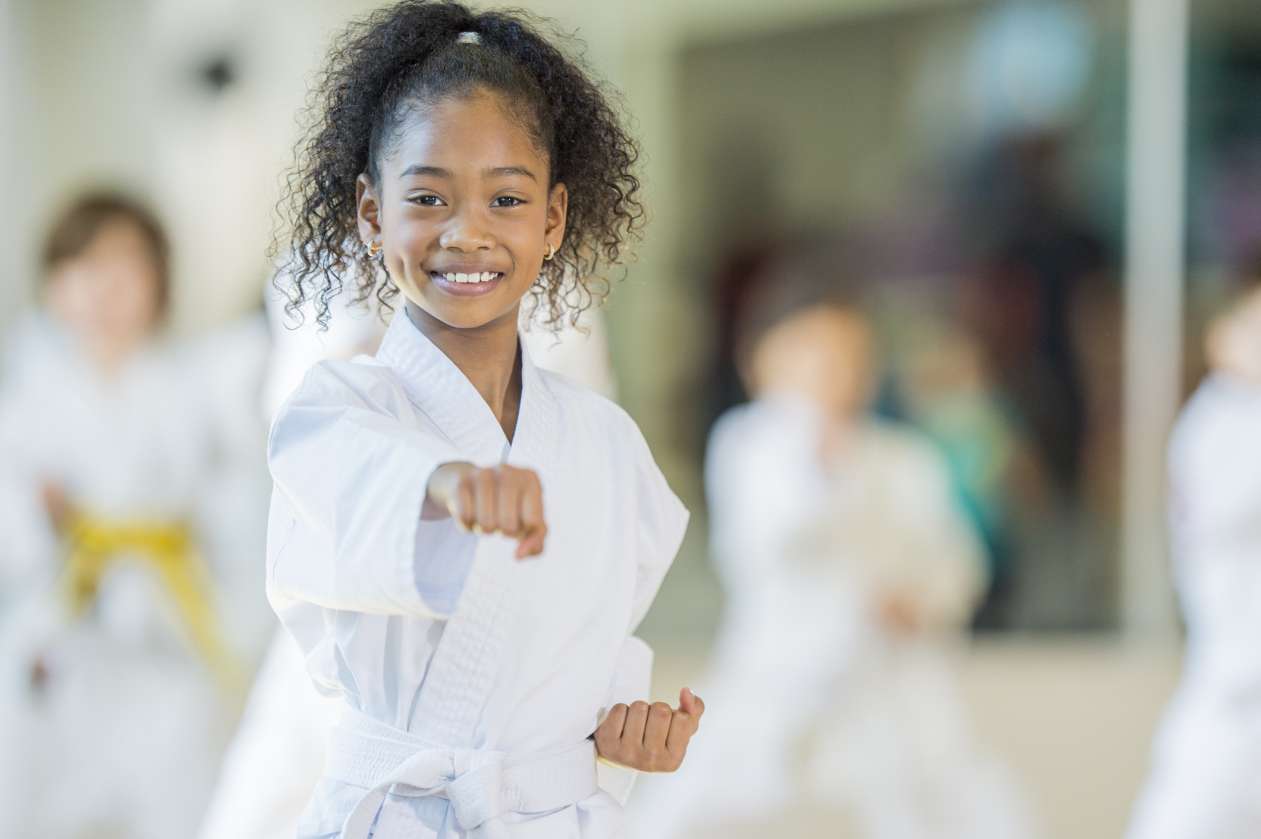
7 great types of martial arts for kids to try
Looking for a sport that will channel your child’s energy while teaching them about discipline and respect? Martial arts are a great option. They can help kids develop self-control and concentration while also focusing on fitness, goal-setting, and mindfulness. And there are many diverse schools and options that welcome children of all ages and genders.
But which one to choose? Here’s an overview of a few types of martial arts for kids. Each one will guarantee lots of physical activity and the opportunity for your child to build their strength, flexibility, self-confidence, and coordination.
1. Brazilian jiu-jitsu: “The gentle art”
Brazilian jiu-jitsu is different than most forms of martial arts in that instead of hitting, kicking or striking, Brazilian jiu-jitsu (sometimes known as BJJ) focuses primarily on grappling and ground-fighting techniques without any striking. This approach helps students learn to adapt to various situations and opponents. And because it isn’t based on using strength and power, this sport is great for even the smallest athlete and helps them learn self-defence skills that can be used against larger opponents. With much rolling on the floor, the sport is fun for kids to engage in, but also involves complex moves that foster problem-solving skills, almost like a chess match.
2. Taekwondo: “The way of the foot and the fist”
Improving the connection between the body and the mind, this martial art emphasizes kicks and leg work, all while teaching discipline, mindfulness, and patience. And with cool moves like spin kicks and throw jumps, kids love learning moves while developing strength, balance, and flexibility. Although there’s quite a bit of sparring involved, it is a safe way to train with the right gear.
3. Karate: “Empty hand”
Perhaps one of the most well-known forms of martial arts, karate focuses primarily on self-control and discipline. Traditionally, the practice of karate taught that one’s self is the real enemy; thus, the practice emphasizes spiritual development and self-mastery. Classes move from basics to sparring, and there’s something for a child of any age or ability, often welcoming students as young as three years old. If a team sport isn’t your child’s favourite thing to do, here’s why you may want to give karate a try.
4. Aikido: “Way of harmonizing energy”
Aikido is known to be the least violent of all martial arts. A student training in Aikido may not have the same self-defence skills against a peer as with other forms, but it’s extremely useful as it teaches basic self-defence moves that can be used against less-skilled people. The moves are not as complex, and this form of martial arts may be ideal for novice martial artists just wanting to dip their feet in the sport.
5. Muay Thai: “Thai boxing”
With an emphasis on striking, this Thai boxing martial art known as “the art of eight limbs” sometimes has a reputation of being more violent. Students are taught self-defence using their entire bodies, and it may actually be one of the easiest forms to learn as the movements are not too complicated. Students learn self-control with intentional moves. In Muay Thai, unlike in other martial arts, there aren’t any levels, so students can learn to set personal goals and work towards them at their own pace.
6. Judo: “Gentle way”
Grappling is the focus in judo, with the aim of pinning an opponent to the ground. Although all martial arts teach discipline and self-control, judo may be the one that emphasizes this the most. Hard work and honour tend to be significant teaching focuses, and Judokas are known to be some of the strongest athletes.
7. Wrestling
Across the world and throughout history, wrestling has been around for centuries. There are two main types: Greco Roman, which does not allow holds below the waist and instead focuses on way to throw opponents down, and Freestyle, which allows athletes to grab opponents above or below the waist in order to pin them down. It’s one of the toughest sports to train and compete in. But wresting students will benefit from a high level of physical and mental conditioning as well as camaraderie. Wrestling is one of those martial arts that tend to see kids who start young continue into their teens and beyond.
Key takeaways
In conclusion, finding the best martial arts for your kids may take some trial and error. Or perhaps, there’s a particular form that your child is drawn to. Finding a good martial arts studio where your child is happy and advances while building confidence and skill may be the most important step. To get started, see if you can try out a few classes at the studio to make sure your child has fun and that it’s a good fit. If you or your child is interested in martial arts involving swords, you may consider taking a Japanese Swordsmanship Course.
Whatever you decide, while studying the art, your child is certain to reap the benefits.





